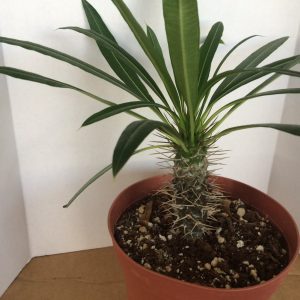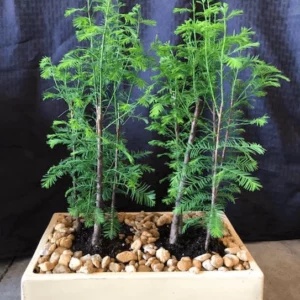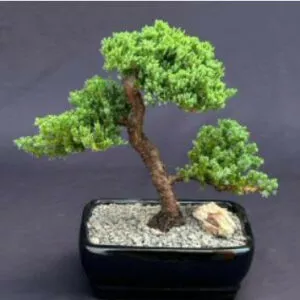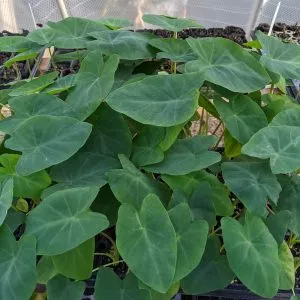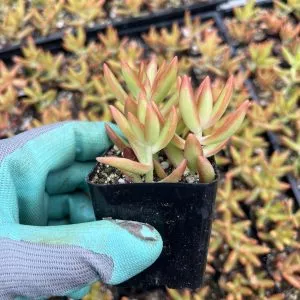No products in the cart.
Table of Contents
Okay, let us get things straight from the word go with the peacock orchids. The plant is a bit confusing as it is not an orchid at all (but a bit more on this later.) One thing is for sure it remains beautiful plants with gorgeous flowers.
It is a stunning mid to late summer to early fall bloomer with strong fragrant flowers with a spectacular appearance.
More About Peacock Orchids
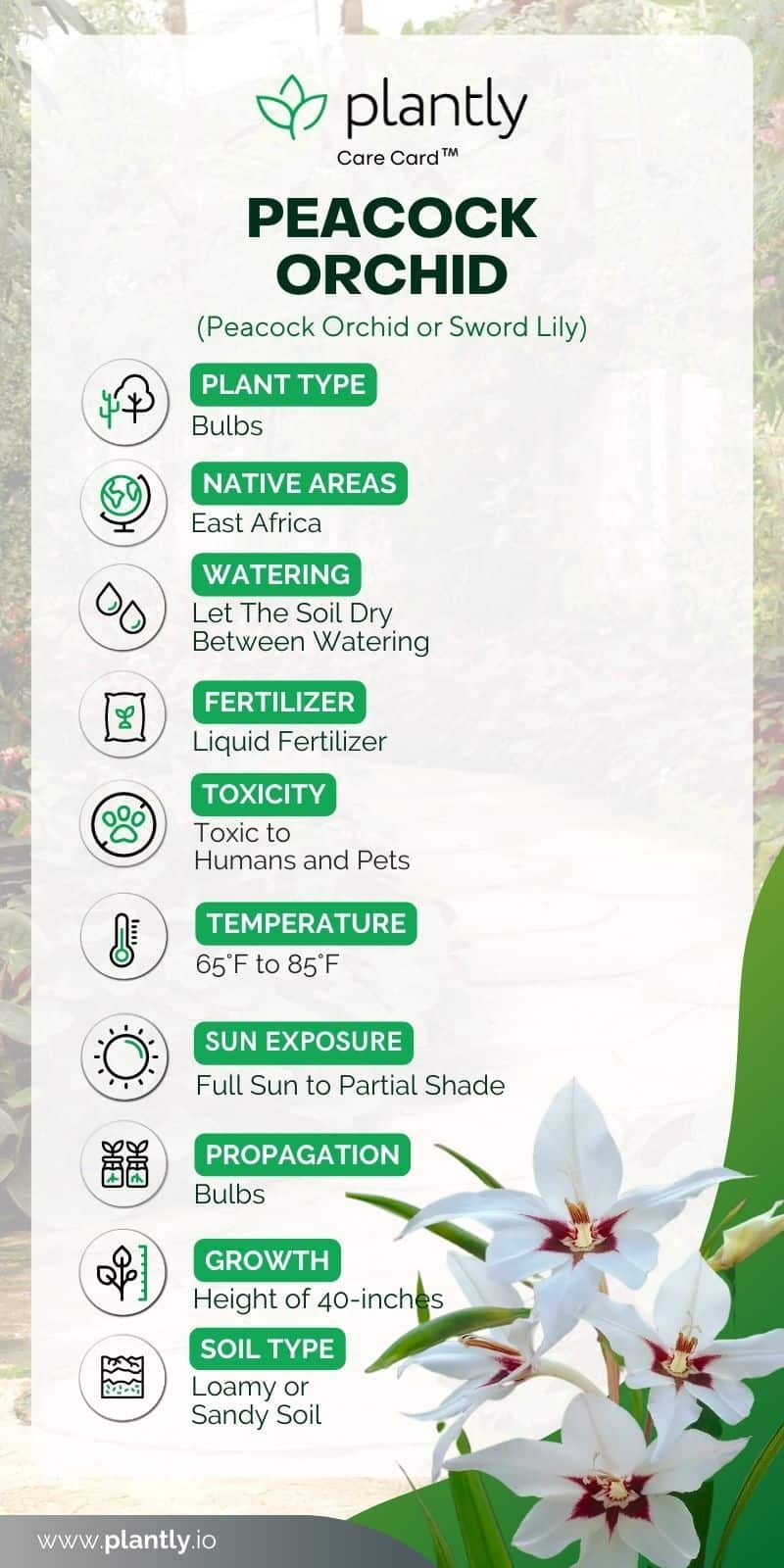
The peacock orchid’s fancy name is Acidanthere and belongs to the Gladiolus genus in the Iris family. So it is not an orchid at all. The flowers are native to East Africa and have sword-like leaves with white flowers.
Another common name is sword lily; some refer to it with the botanical name Gladiolus callianthus or Gladiolus acidanthera. One thing is for sure it is a unique flower as the white flowers have a burgundy center with a sweet fragrance.
Planting peacock orchids indoors can grow up to 40-inches and leaves a true impression on anyone that observes them. Furthermore, they look stunning in a garden. Still, many gardeners refer to it as a summer bulb. But it is a globase corm and not a true bulb.
You will also find the flowers used in cut flower arrangements as it is long-lasting and looks excellent on landscaping borders.
Peacock Orchid Care

When you plant peacock orchids, it needs tender loving care, similar to most other orchids. So let’s get out hands dirty and dig in.
Peacock Orchid Preferred Soil Mix Peat Moss
The important thing in growing the peacock orchid is to provide it with well-drained soil. The fantastic thing is the plant tolerates different types of soil. The best is loamy or sandy soil for outdoor growing.
If you have only clay soil, it helps to amend it with compost for added drainage, and it helps make the soil light and airy. Growing as an outdoor plant, place it at a depth of six inches with at least an eight-inch space between the peacock orchid bulbs.
For container growing indoors, you can use a combination of perlite and peat moss.
Light Requirements for Peacock Orchid
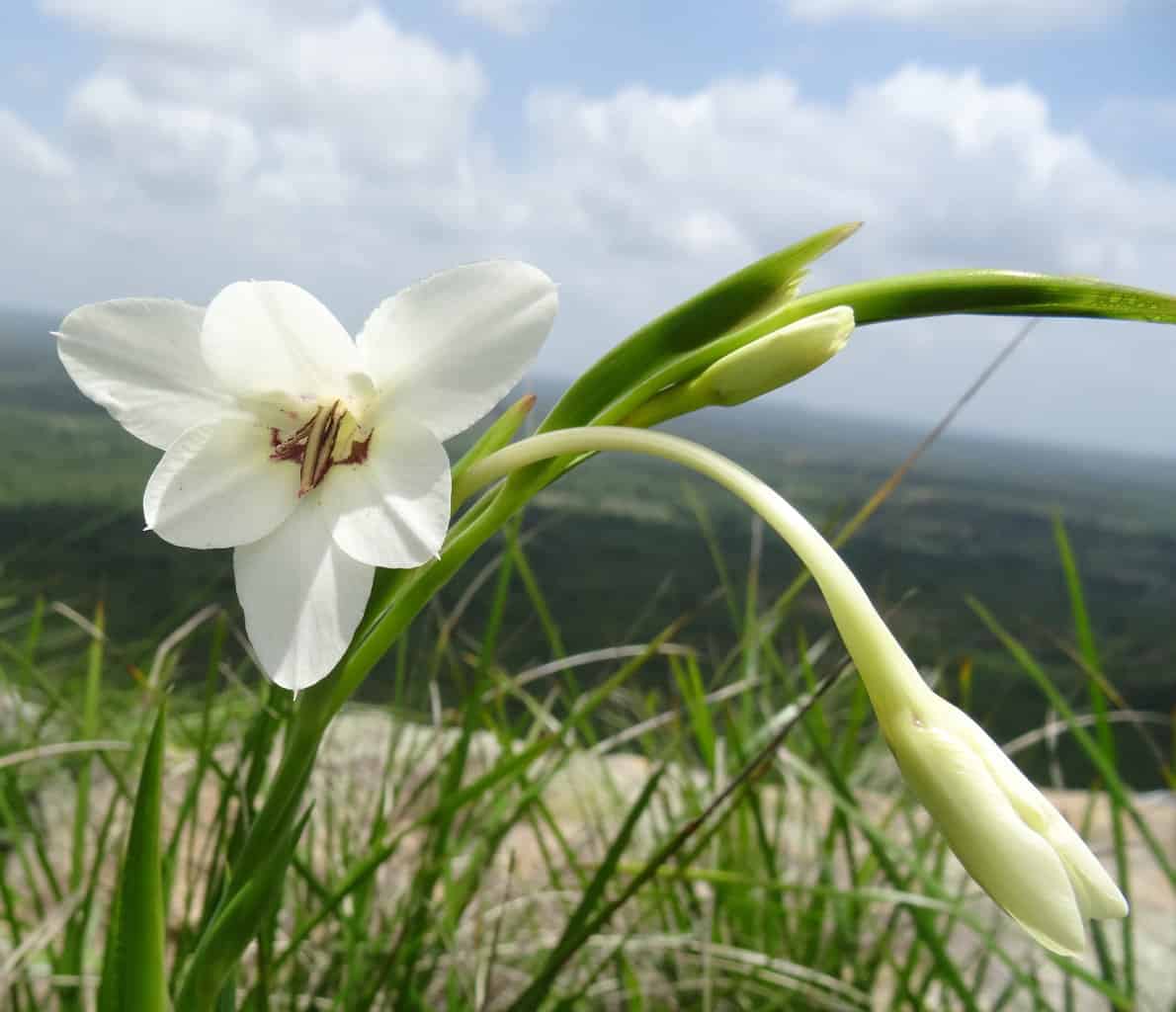
One thing the sword lily loves is full sun, but it depends on where you live. For warmer climates where the sun is intense in summer and the mid-afternoon, provide it with partial shade.
For cooler climates, the ideal place in the garden is full sunlight in the warm mid-afternoon sun. The important thing is to provide peacock orchids with loads of light daily. A suitable place to grow peacock orchids indoors is at an east, south, or west-facing window.
But in warmer climates, the latter might provide too much light, and a north-facing window helps.
How Often to Water Peacock Orchid
For peacock orchid care when needing water, it thrives in moist soil but is not soggy as it leads to root rot. Hence, the best is to let the soil dry in between watering. As with other plants, it needs more water in the growing season than during winter.
Fertilizing Your Peacock Orchid

The peacock lily needs fertile soil; the best way to achieve this is to add compost to help improve the organic content. You can supplement the soil with fertilizer as it helps. But not too much as the salt buildup can harm your plant.
We recommend a liquid fertilizer every two to four weeks in the growing season. You need not feed your peacock orchids in winter.
Temperature and Humidity Level Needs
The critical thing to remember about the peacock orchid is that it is a late bloomer developing flowers in summer to early fall. As the plant is native to East Africa, it loves warm climates.
Hence, the best is to keep the temperatures between 65°F to 85°F. But your plant will struggle once it goes over this temperature. Another notable thing is the fragrant Gladiolus is not frost-tolerant and best moved inside.
For growing outdoors, the best place to do this is in the USA hardiness zones 7 to 11. Alternatively, you can dig up the corms to keep them in winter storage inside and replant them in early spring.
In the hardiness zones six to seven, you can leave the peacock orchid bulbs in the ground and protect them with mulch from the first frost. Furthermore, peacock orchids love humid conditions of 70%.
So, being an indoor plant helps to invest in a humidifier or use a pebble tray placed underneath your plant.
Transplanting and Pruning Gladiolus Callianthus

Often you find species in the Gladiolus family grown outside. Yet, when you grow them in pots, it will take longer before you need to transplant them outdoors as they are slow growers. Still, when the time comes to transplant your peacock orchids into the garden, you can do it as follow:
If you grow bulbs in a pot, a small container size of eight inches can hold up to eight plants. Yet, if you decide to move them to bigger containers, we recommend using a 12-inch pot to hold a few of them.
Before transplanting your beautiful flowers to the garden, it helps to wait until they have foliage.
Next, prepare the soil and dig a hole to plant them at six inches. Furthermore, please provide them with an eight-inch space between each plant to grow.
For small corms, you can place them in the ground at a depth of four inches.
Cover with soil and water, and keep them moist.
The peacock orchids do not need much pruning or trimming as it does not grow huge or messy. The most pruning will be removing dead, discolored, or damaged leaves. Furthermore, you will deadhead flowers when spent. As your orchid matures, you will do more pruning as it starts to look sluggish.
Propagating Peacock Orchid
To propagate peacock orchids, you will see bulbs at the end of the growing season. The bulbs form corms. The easy way is to take the bulbs and plant them.
You can store the bulbs inside until spring to plant in pots or in the garden when winter arrives. If your plant grows in a container outdoors, you can bring your plant inside over winter.
To store the bulbs, get the container and cover them with newspaper, which helps the corms dry faster. Remove excess soil to make them clean. Alternatively, you can cover them with a paper bag and add peat moss.
Keep them stored in a dark yet cool area to plant peacock orchid bulbs in spring.
Peacock Orchid Varieties
One stand-out variety is the Gladiolus murielae which used to go by Acidanthera bicolor. Many people also refer to it by the common name peacock orchid. But the names for this unique plant are fragrant Gladiolus, peacock lily, and sword lily.
It also grows a globose corm and is considered an heirloom bulb as it has bloomed for 44 years when first collected. Yet, compared to the Gladiolus callianthus native to East Africa, this one grows mainly in northern Ethiopia.
It would be best to look at the leaf venation and texture to distinguish the two. The Gladiolus murielae has softer foliage with secondary veins. The anther apiculi are also longer and rigid, while the G. callianthus has a shorter yet acute appendage.
Lastly, both these varieties tend to bloom later in the year.
In stock Only 1 left in stock In stock In stock
$29.99
Sold By:
Succulent Oasis
Large Madagascar Palm | A very unique and beautiful cactus
Rated 4.84 out of 5 based on 352 customer ratings00
Sold By:
Succulent Oasis
Free Shipping
$156.04
Sold By:
BONSAI WORLD LLC
Ficus Kaneshiro Bonsai Tree (ficus microcarpa ‘kaneshiro’)
Only 1 available and it’s in 1 people’s basket
Sold By:
BONSAI WORLD LLC
Free Shipping
$209.24
Sold By:
BONSAI WORLD LLC
Bald Cypress Forest Planting. Shaded bonsai trees
Sold By:
BONSAI WORLD LLC
$51.99
Sold By:
Succulent Oasis
Mature String of Pearls in Ceramic Sleigh,
Rated 4.84 out of 5 based on 352 customer ratings00
Sold By:
Succulent Oasis
Peacock Orchid Diseases and Pests
Common pests are aphids, thrips, and spider mites you find hiding on the underside of the leaves. If you notice any of these pests, removing your plant from others is best to check the other plants.
We recommend a treatment of neem oil or insecticidal soap. In addition, you may find bacterial, root rot, or fungal diseases on your plant. These can result from overwatering and getting the leaves wet when standing in high humidity.
Where to Buy Peacock Orchid?
The good news is that you can buy peacock orchids at your local garden center. But you need not look far as Plantly has the peacock orchid bulbs available for you to buy.
Whether you want to buy, sell or simply reach out to other plant enthusiasts, Plantly is the right place to be!
Only 1 left in stock In stock In stock In stock
Free Shipping
$227.59
Sold By:
BONSAI WORLD LLC
Juniper Bonsai Tree – Trained (juniper procumbens nana)
Sold By:
BONSAI WORLD LLC
$17.95
Sold By:
Wonka Plants
$25.00Colocasia – Jack’s Giant – Starter Plant
Only 10 available and it’s in 1 people’s basket Rated 4.94 out of 5 based on 108 customer ratings00
Sold By:
Wonka Plants
$4.00
Sold By:
Cacti and Exotica
Sedum adolphii
Rated 4.98 out of 5 based on 59 customer ratings00
Sold By:
Cacti and Exotica
$19.99
Sold By:
BubbleBlooms
Parrot Pitcherplant, Carnivorous Plant, Sarracenia psittacina, Red Pitcher Plant, Variegated Michx
Only 86 available and it’s in 4 people’s basket Rated 4.81 out of 5 based on 279 customer ratings00
Sold By:
BubbleBlooms
